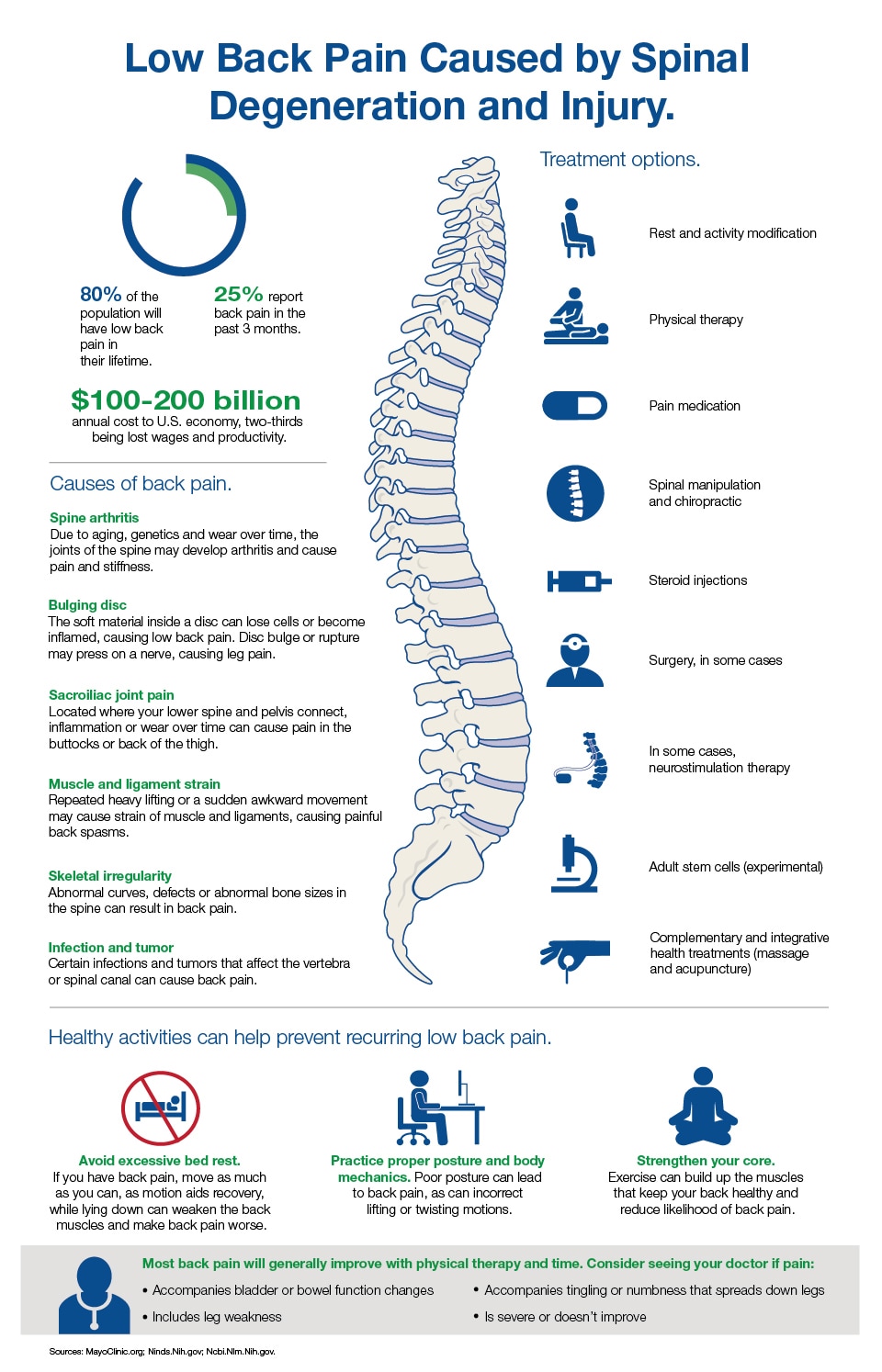Infographic: Back Pain

Low Back Pain Caused by Spinal Degeneration and Injury.
80% of the population will have low back pain in their lifetime.
25% report back pain in the past 3 months.
$100-200 billion annual cost to U.S. economy, two-thirds being lost wages and productivity.
Causes of back pain.
Spine arthritis
Due to aging, genetics and wear over time, the joints of the spine may develop arthritis and cause pain and stiffness.
Bulging disc
The soft material inside a disc can lose cells or become inflamed, causing low back pain. Disc bulge or rupture may press on a nerve, causing leg pain.
Sacroiliac joint pain
Located where your lower spine and pelvis connect, inflammation or wear over time can cause pain in the buttocks or back of the thigh.
Muscle and ligament strain
Repeated heavy lifting or a sudden awkward movement may cause strain of muscle and ligaments, causing painful back spasms.
Skeletal irregularity
Abnormal curves, defects or abnormal bone sizes in the spine can result in back pain.
Infection and tumor
Certain infections and tumors that affect the vertebra or spinal canal can cause back pain.
Treatment options.
- Rest and activity modification
- Physical therapy
- Pain medication
- Spinal manipulation and chiropractic
- Steroid injections
- Surgery, in some cases
- In some cases, neurostimulation therapy
- Adult stem cells (experimental)
- Complementary and integrative health treatments (massage and acupuncture)
Healthy activities can help prevent recurring low back pain.
- Avoid excessive bed rest. If you have back pain, move as much as you can, as motion aids recovery, while lying down can weaken the back muscles and make back pain worse.
- Practice proper posture and body mechanics. Poor posture can lead to back pain, as can incorrect lifting or twisting motions.
- Strengthen your core. Exercise can build up the muscles that keep your back healthy and reduce likelihood of back pain.
Most back pain will generally improve with physical therapy and time. Consider seeing your doctor if pain:
- Accompanies bladder or bowel function changes
- Includes leg weakness
- Accompanies tingling or numbness that spreads down legs
- Is severe or doesn't improve
Sources: MayoClinic.org; Ninds.Nih.gov; Ncbi.Nlm.Nih.gov.


No comments:
Post a Comment
Dear Reader, We Appreciate Your Comments#They Keep Us Moving